This page is a work in progress!
What is moss?
Mosses are small, non-vascular flowerless plants which belong to the an ancient group or plants called bryophytes, which comprise liverworts, mosses, and hornworts. The individual plants are usually composed of simple leaves that are generally only one cell thick, attached to a stem that may be branched or unbranched..
Parts of Moss

The gametophyte is the leafy part of a moss that does most of the photosynthesizing. It makes eggs and/or sperm, called gametes. It has a stem or stems, and is anchored to the ground by rhizoids, which are not roots since they do not have vascular tissue. The calyptra is also gametophytic. Gametophytic tissue has one set of chromosomes (N). Sporophytic tissue has two sets of chromosomes (2N). In mosses, the sporophyte consists of a long sturdy seta with a capsule on top. The capsule opens by the shedding of its operculum, revealing a peristome that liberates the spores.
https://bryophyte.cnps.org/index.php/resources/beginner
Common mosses:
still updating this gallery
still updating this gallery
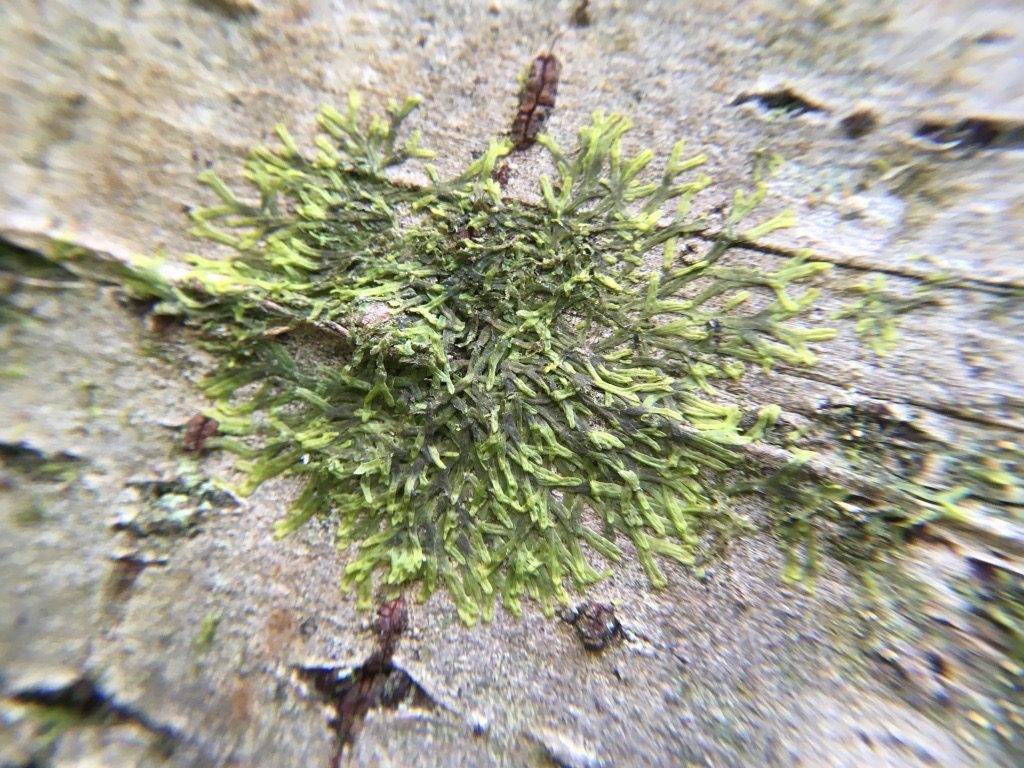
Liverwort: Metzgeria furcata (Forked Veilwort) or Frullania growing on a tree 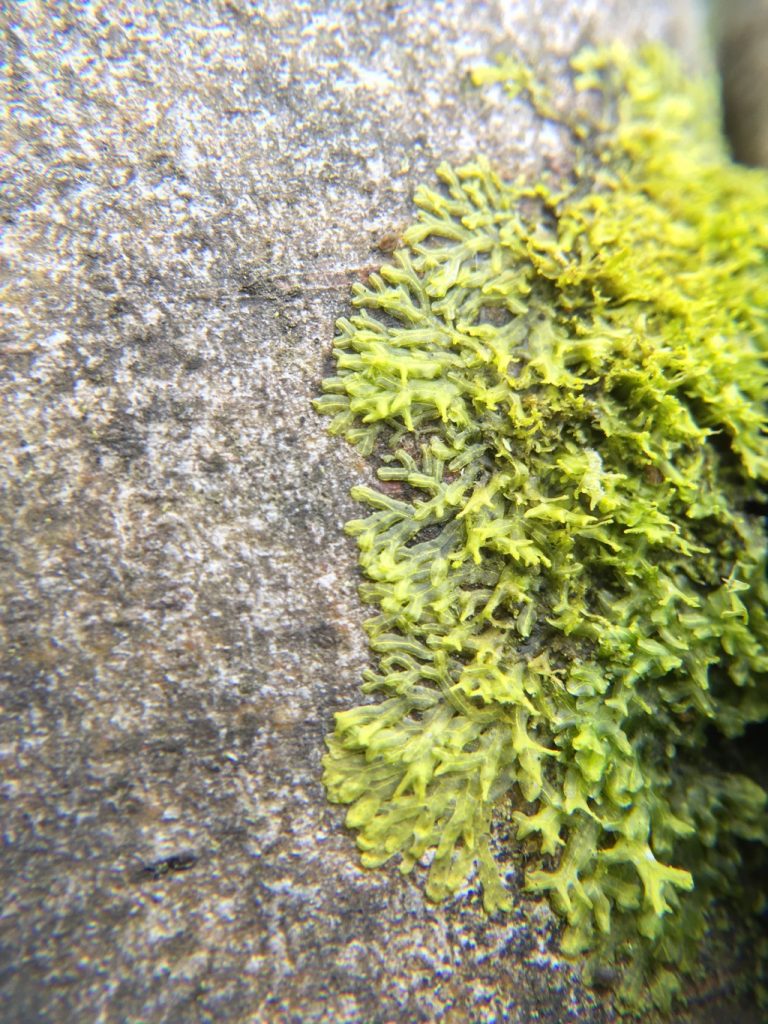
Liverwort: Metzgeria furcata (Forked Veilwort) or Frullania growing on a tree 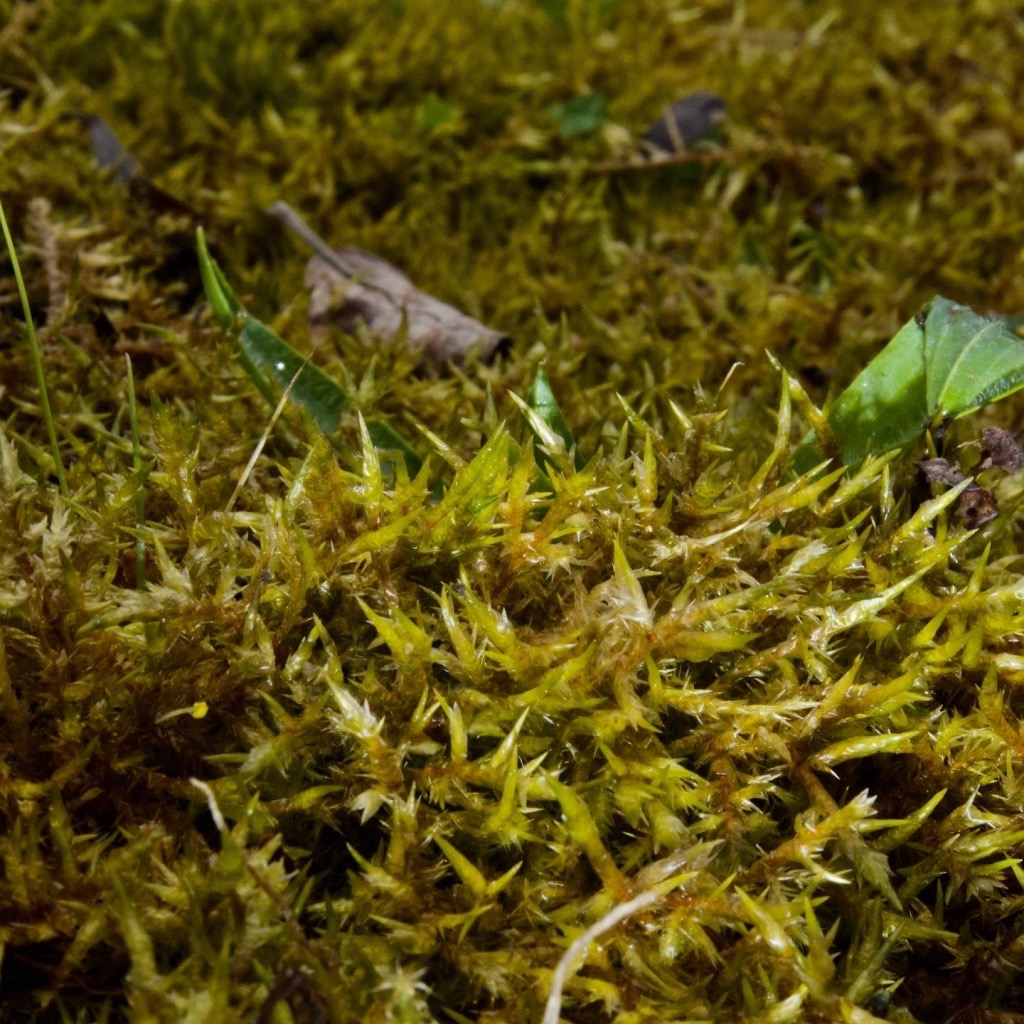
Calliergonella cuspidata (Pointed spear-moss) car parks / forest floor 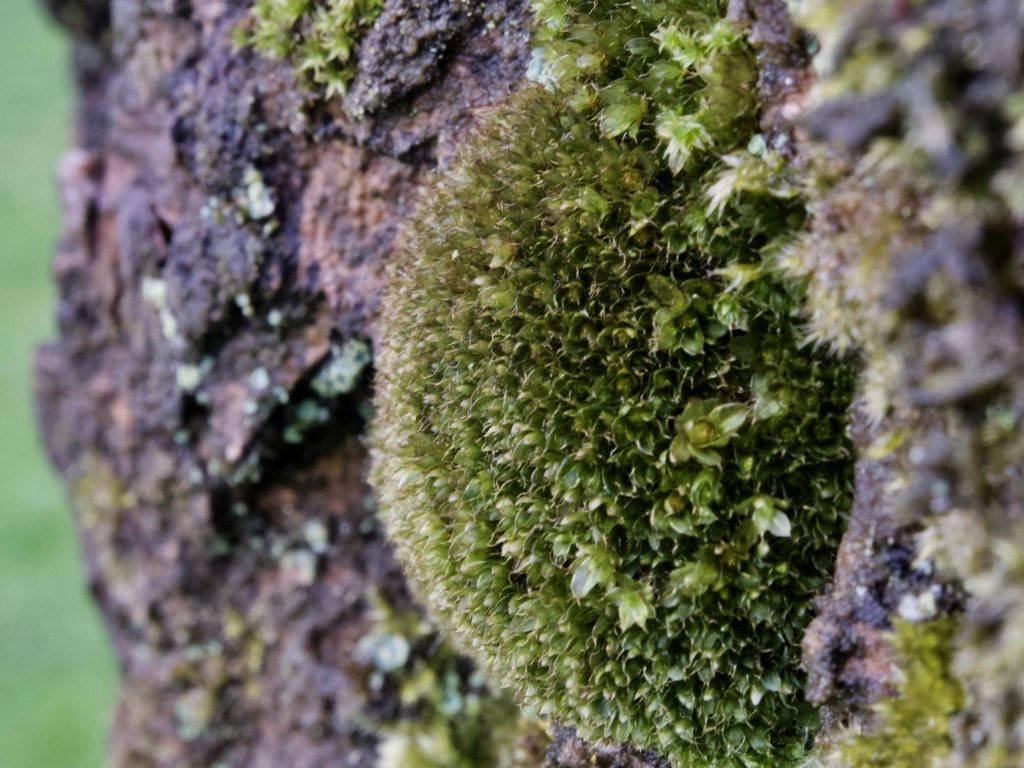
Mnium hornum (‘Swan’s-neck or thyme-moss) 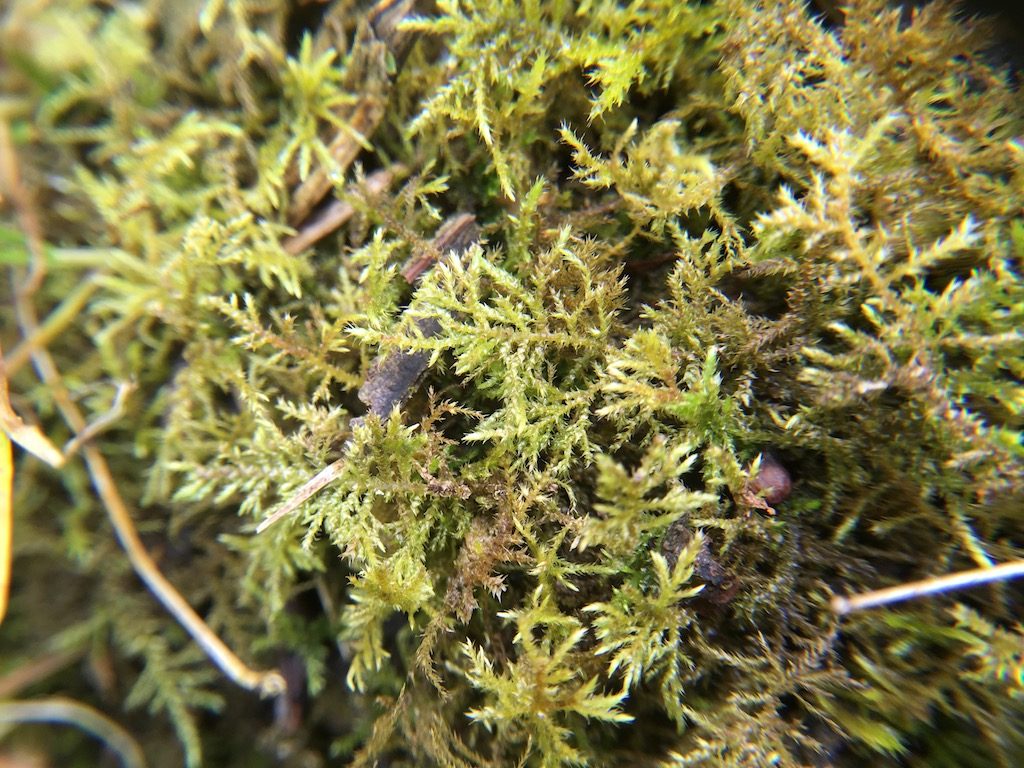

Posssibly Dicranium 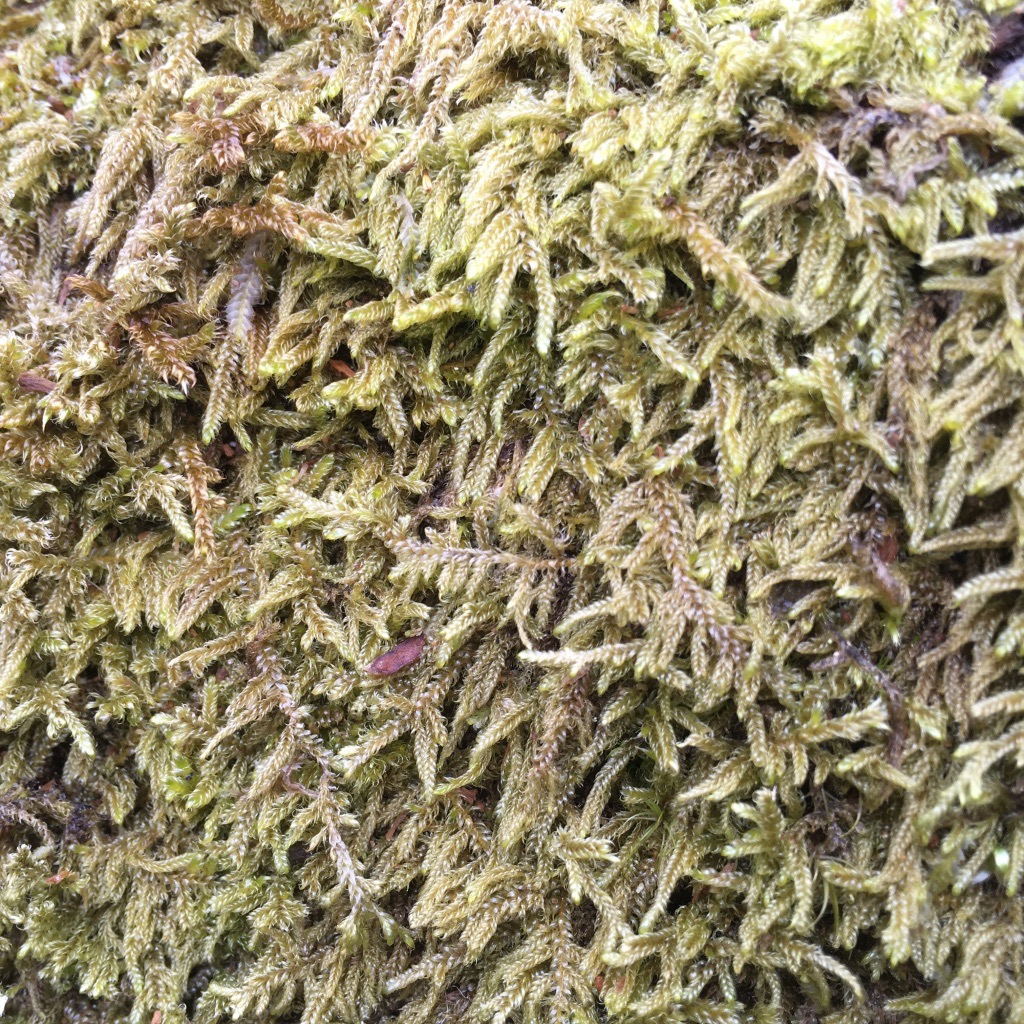
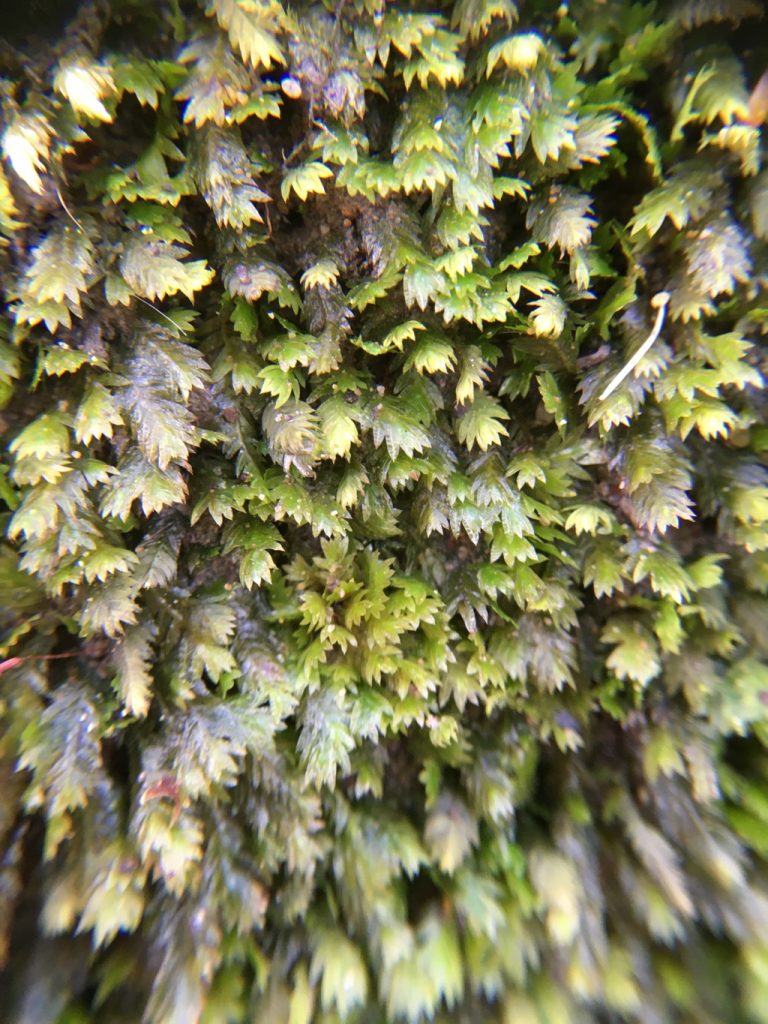
Fissenden Pocket mosses – muddy banks under trees 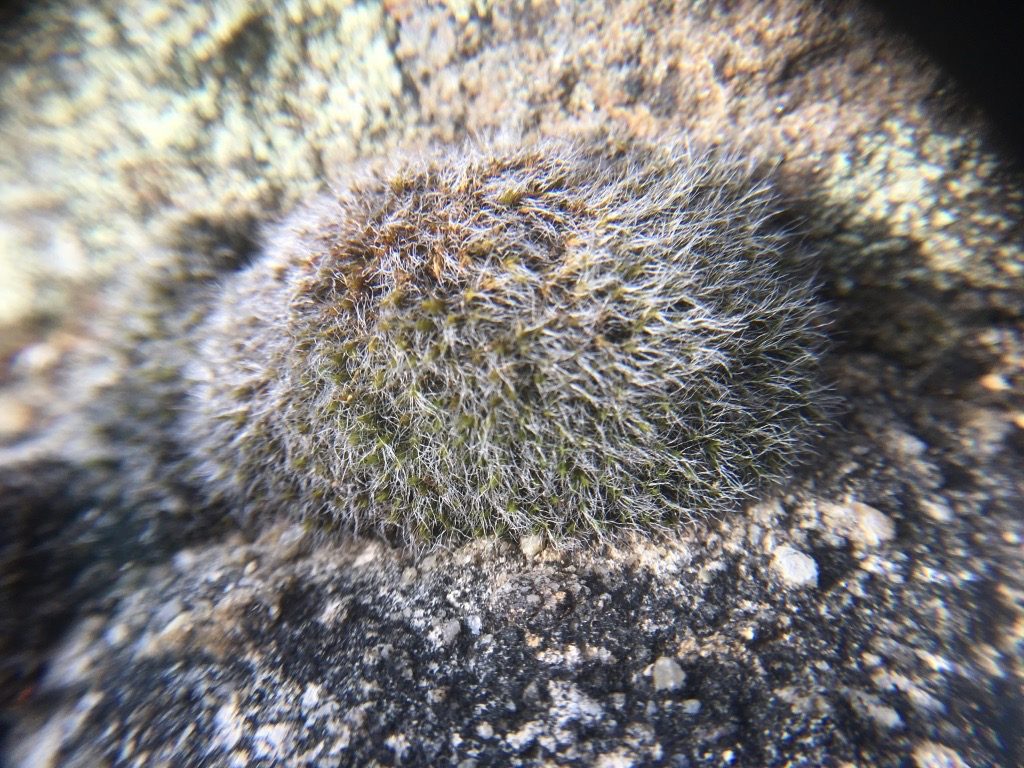
Grimmia pulvinata (Grey-cushioned Grimmia) Walls/stones/ 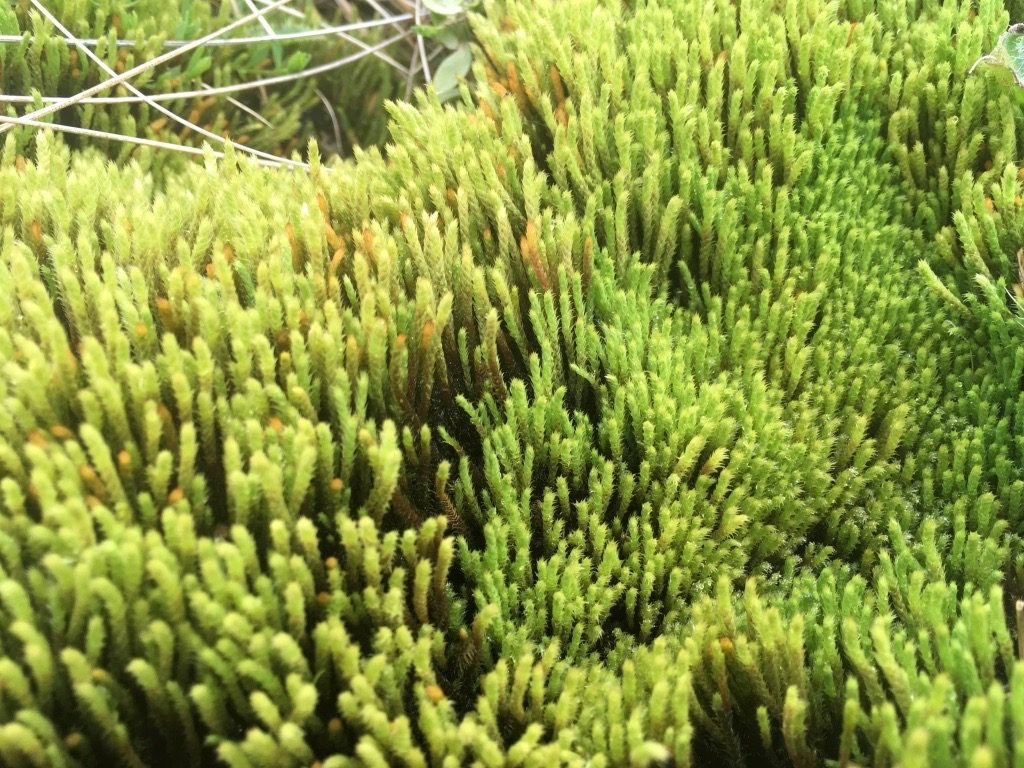
Apple Moss? 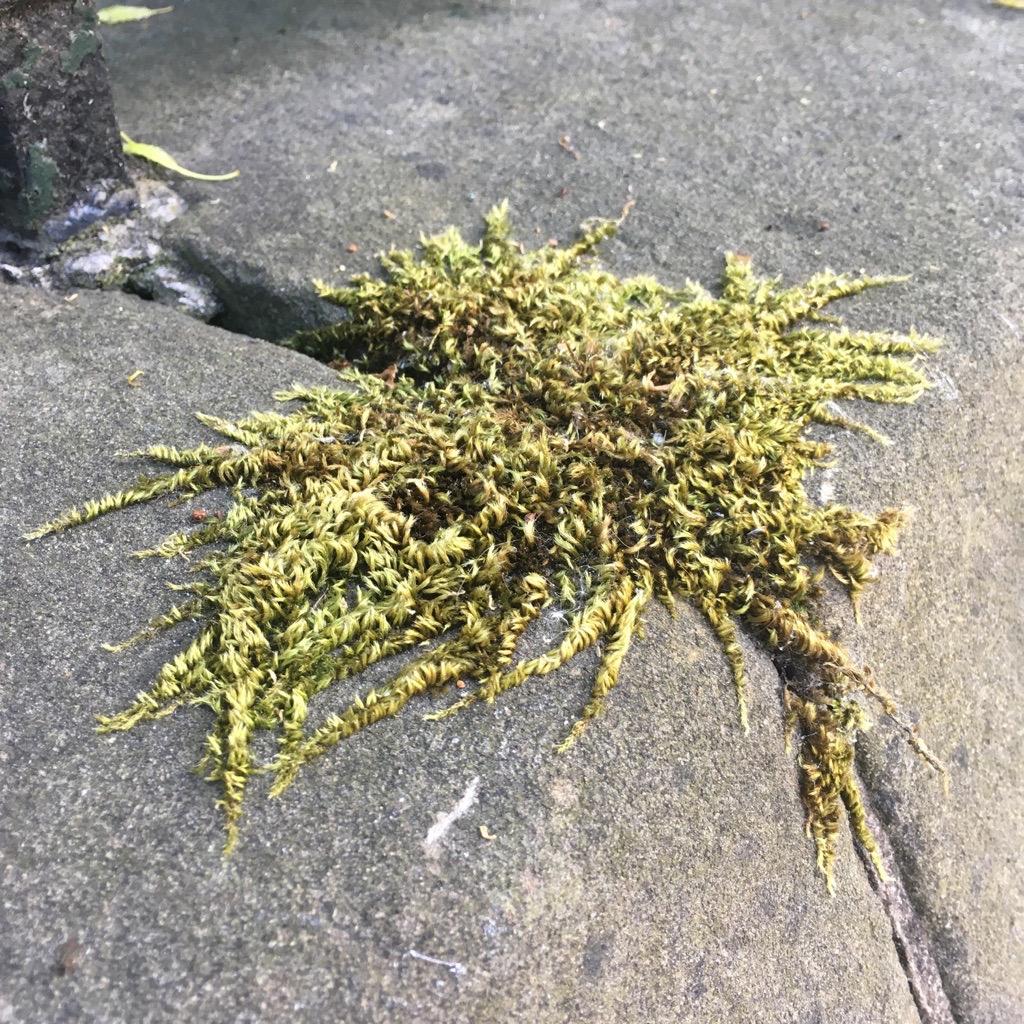
Homalothecium sericeum (Golden fleece / Silky Wall Feather-moss). Growing on walls and stones. 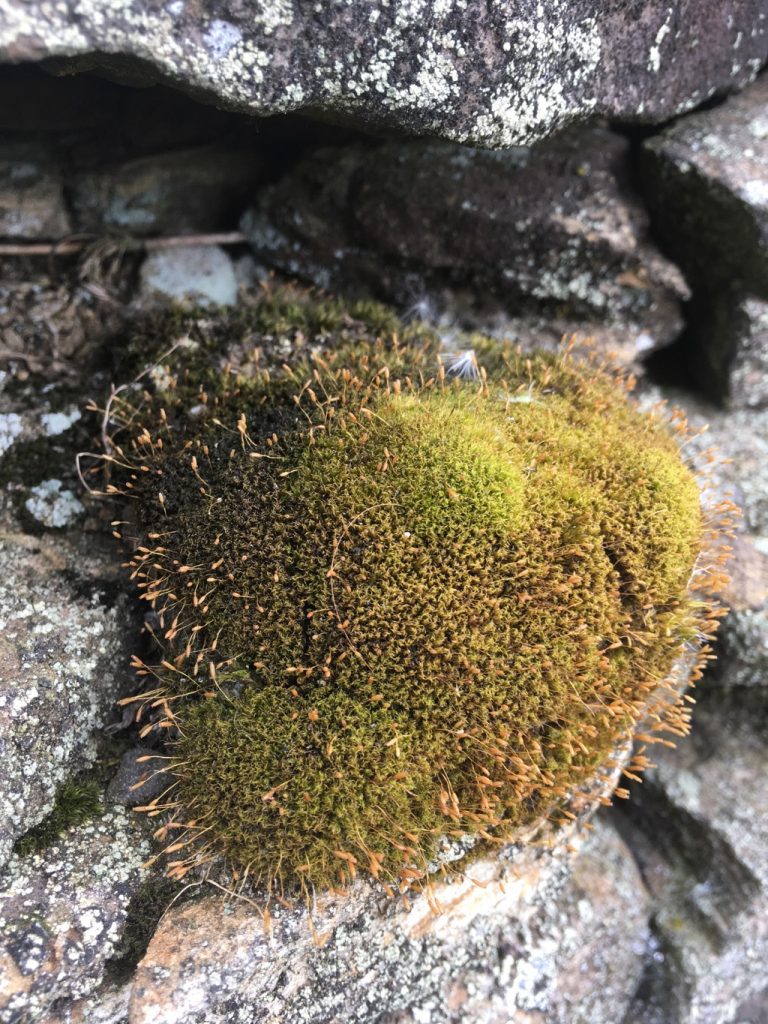
Unknown 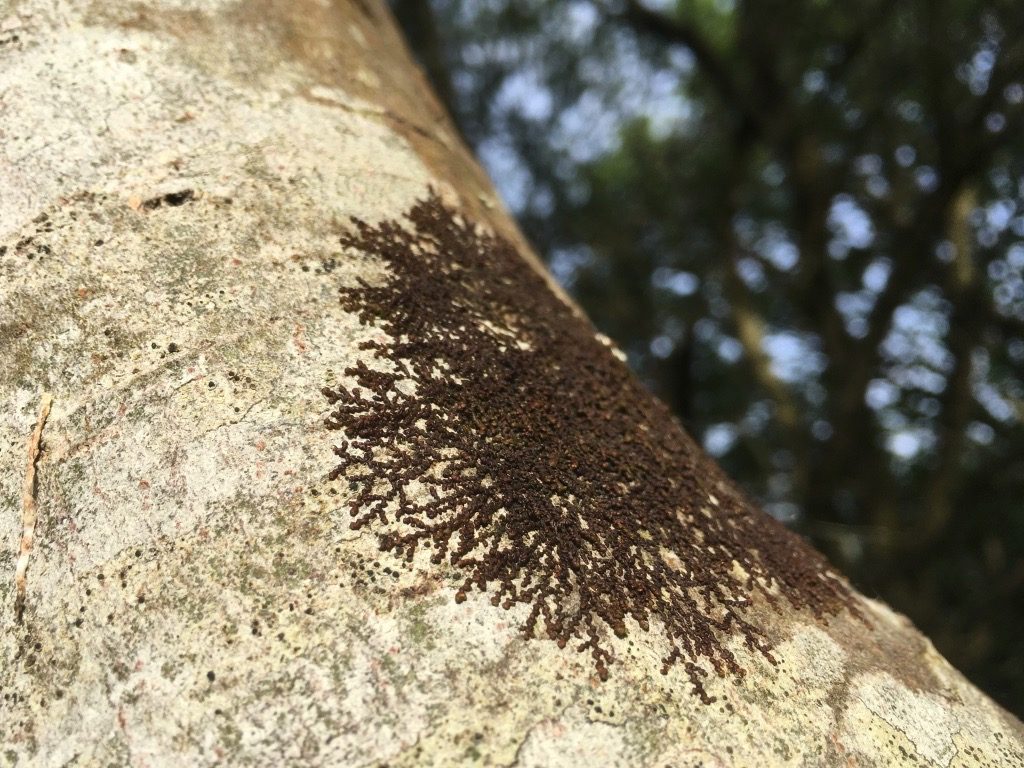
Metzgeria furcata (Forked Veilwort) or Frullania growing on a trees 
Maybe Cratoneuron filicinum 

possibly Wall Screw-moss (Tortula muralis) Growing on brick mortar 
Plagonium Undulatum – palm tree moss – under trees 
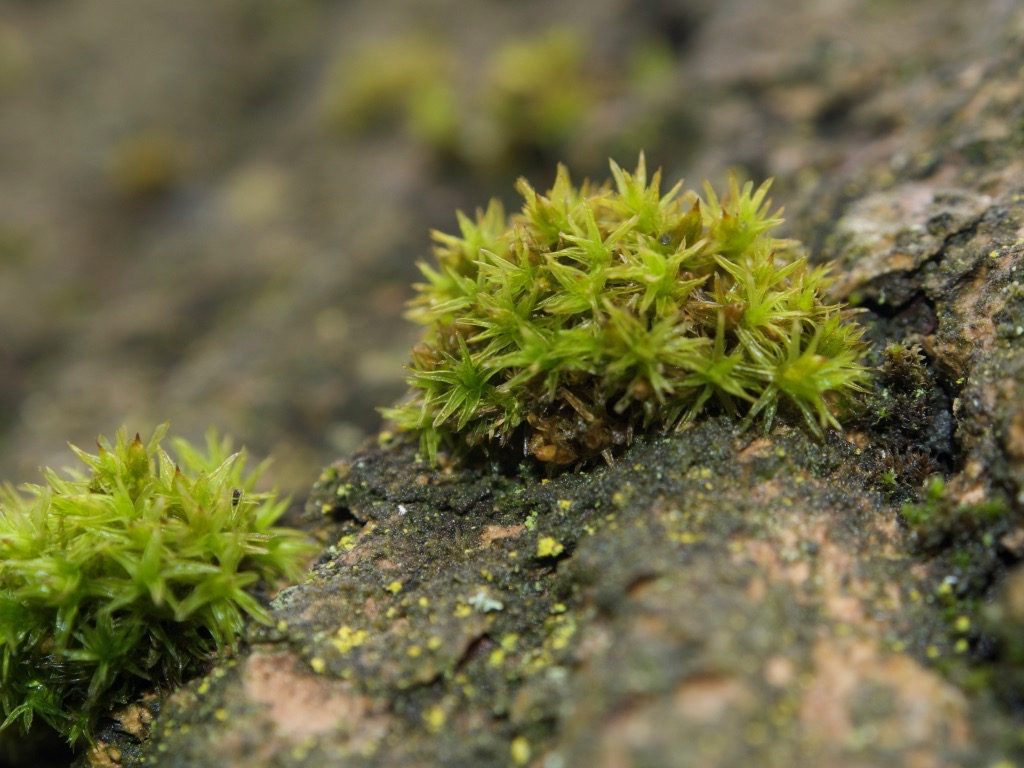
Orthotrichum anomalum (Wood or Anomalous Bristle-moss) Pin Cushion Moss growing on tree bark or 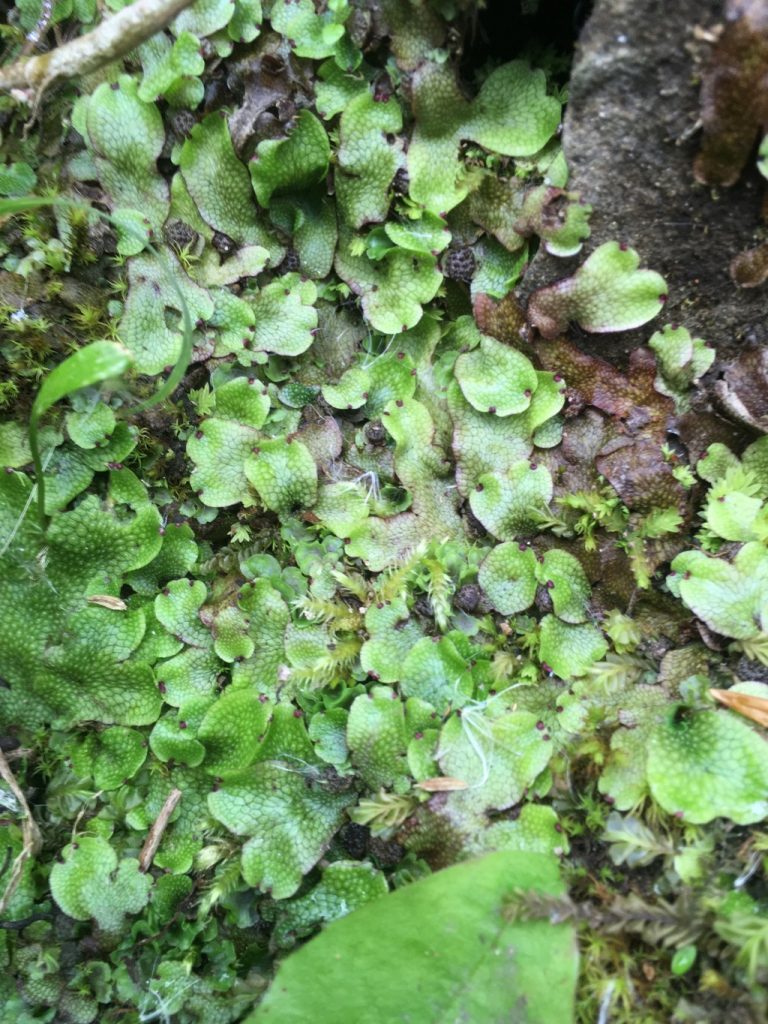


Sphagnum – on peat bogs / not generally found in urban environs 
Sphagnum – on peat bogs / not generally found in urban environs 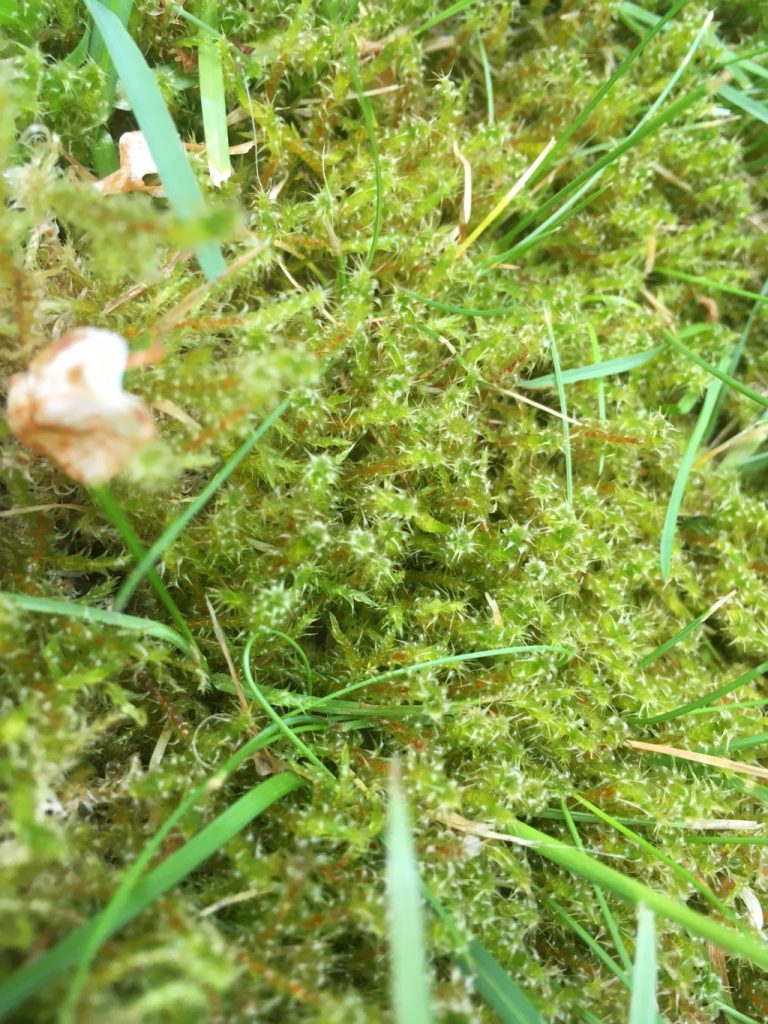
Rhytidiadelphus squarrosus (Electrified Cat-tail moss, Springy Turf-moss) with grass 

possibly Wall Screw-moss (Tortula muralis) Growing on brick mortar 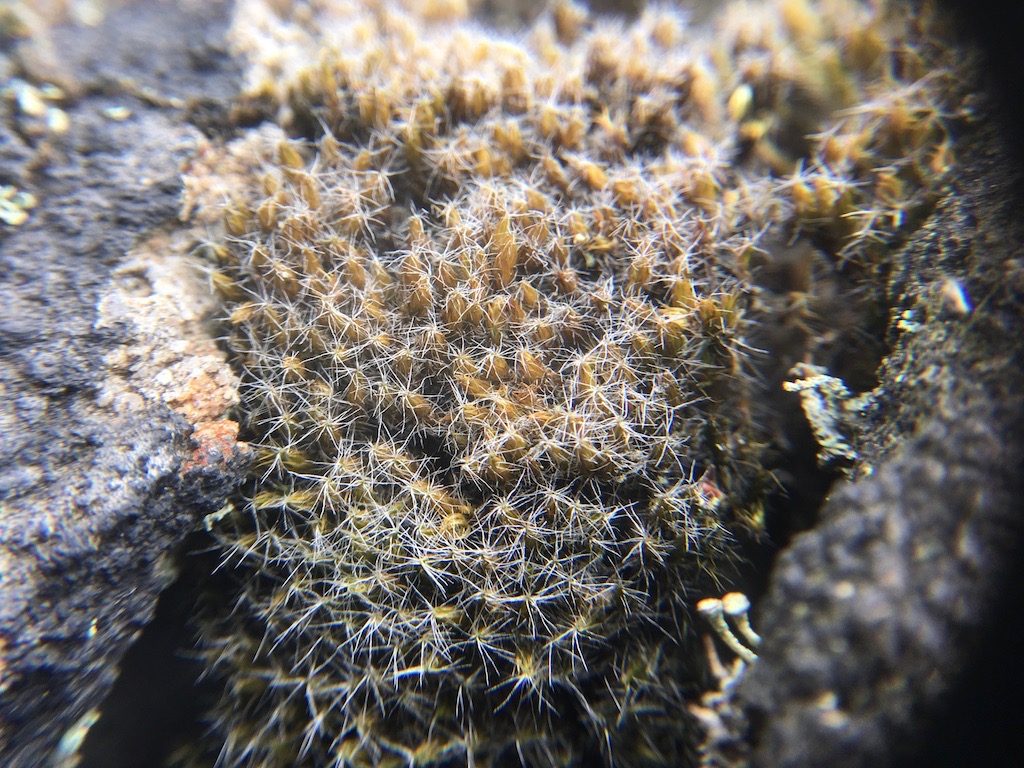
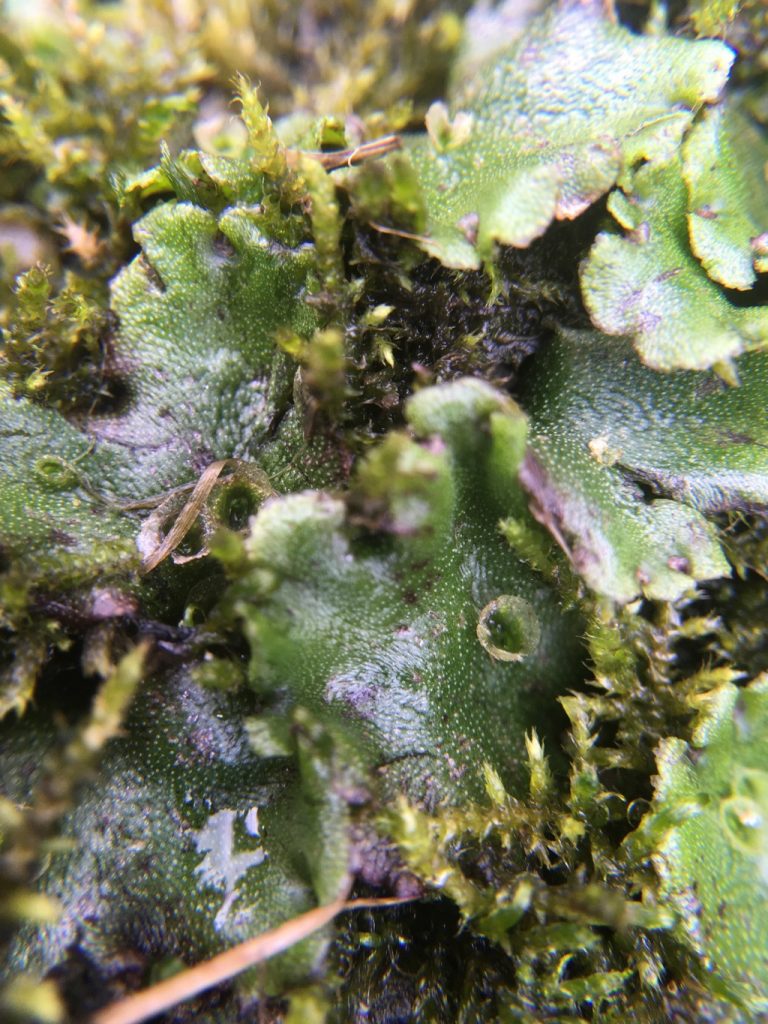
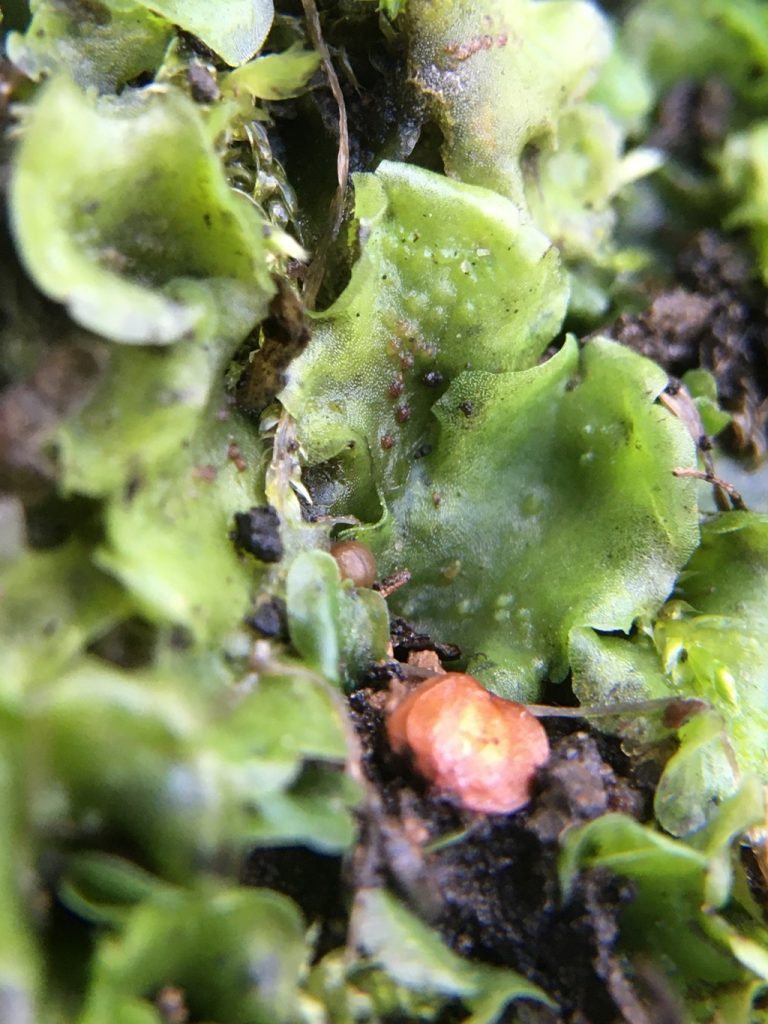
Snake Skin and Great scented liverwort 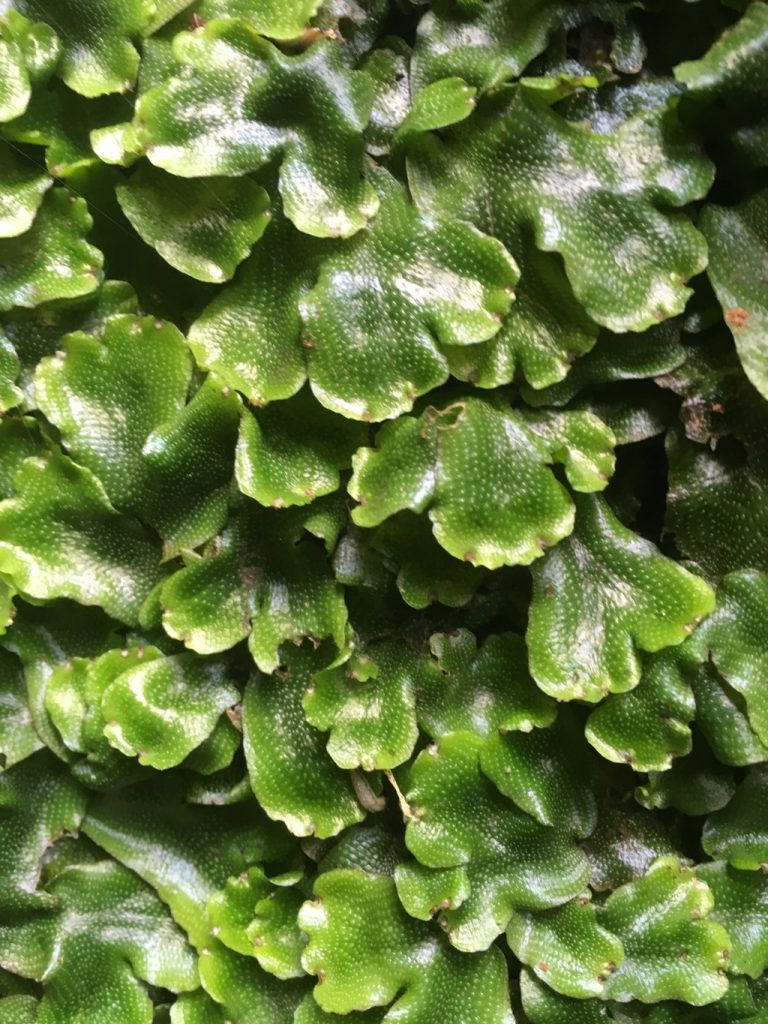
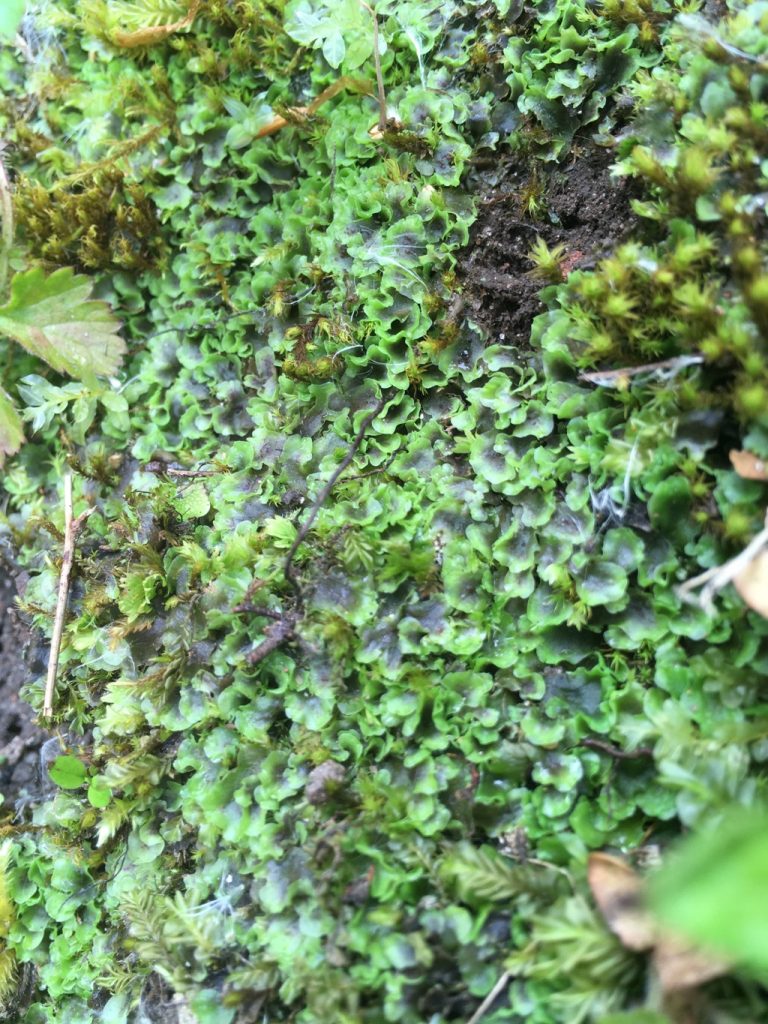

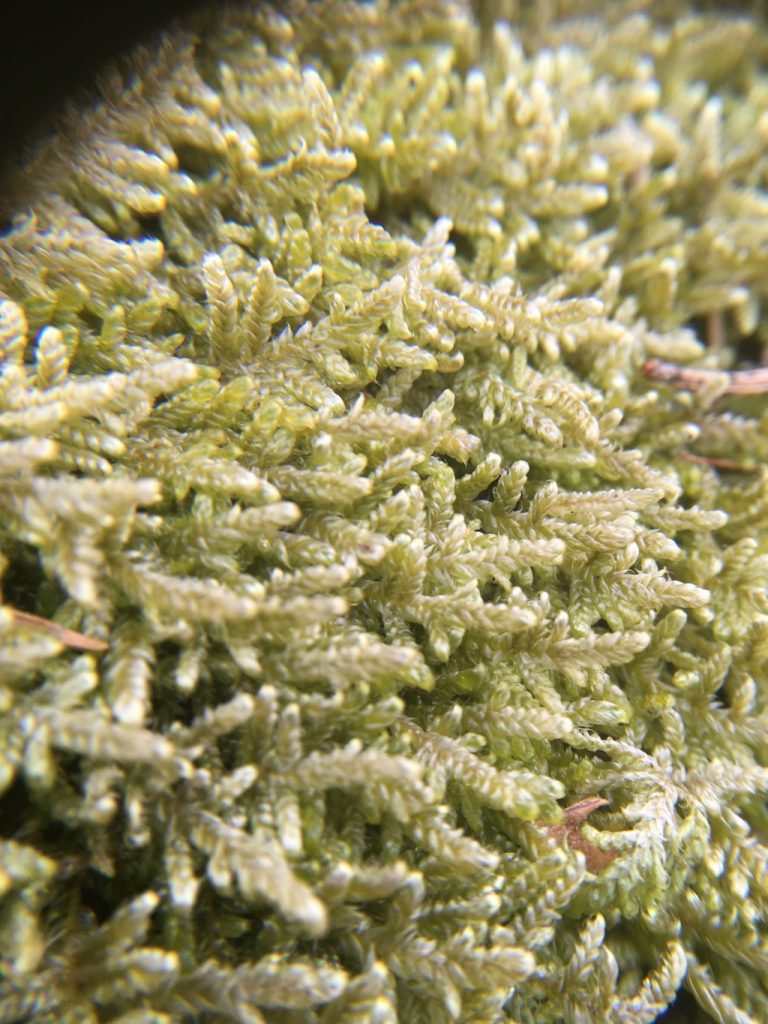
Terrariums
Terrariums are self-contained ecosystems, which are powered by sunlight. The plants photosynthesise, releasing oxygen and water. The water is released into the air as gas which condenses on the sides of the tank. The water then trickles down into the soil. Bacteria in the soil break down the oxygen and creates carbon dioxide, which the plant can use. And so, the cycle continues.
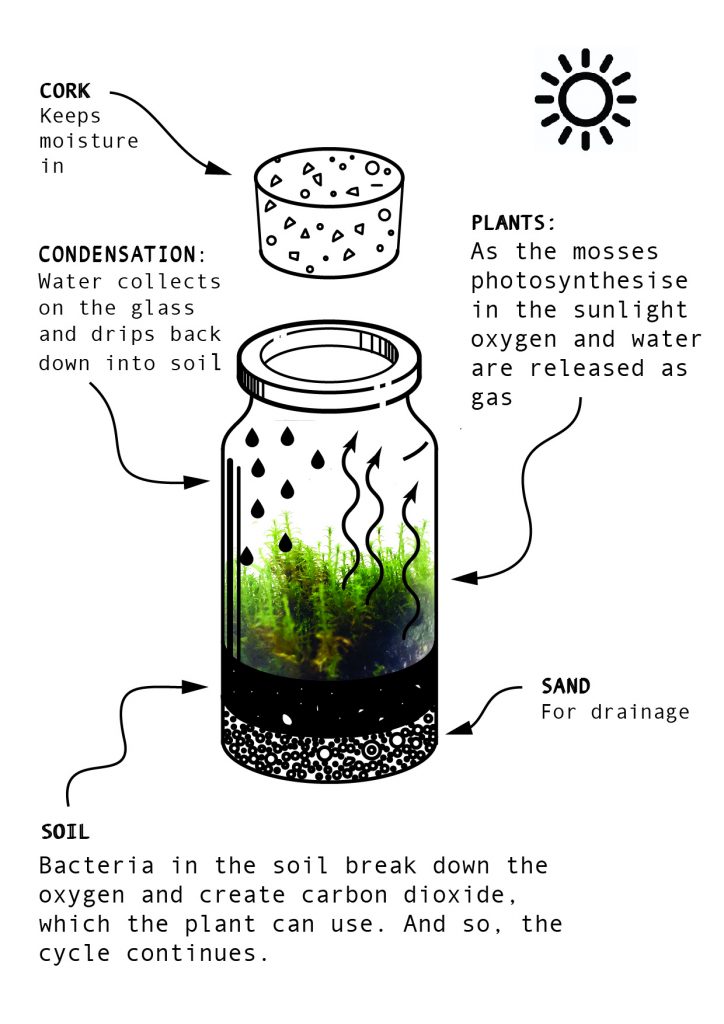
The idea that plants could survive in sealed glass cases was discovered by accident in the 1800s. Before this discovery, plants were transported as dry specimens since live pants would often die during transportation, in the darkness of the cargo holds or through exposure to salty sea air. Dr Nathaniel Bagshaw Ward returned from an expedition. He noticed that a fern spore had germinated by chance inside a glass jar. He left the seal intact for about four years before eventually publishing a book on the subject in 1842. A few years later, the ‘Wardian Case’ became fashionable household objects and represented a massive leap of scientific understanding that enabled the transport plants worldwide.
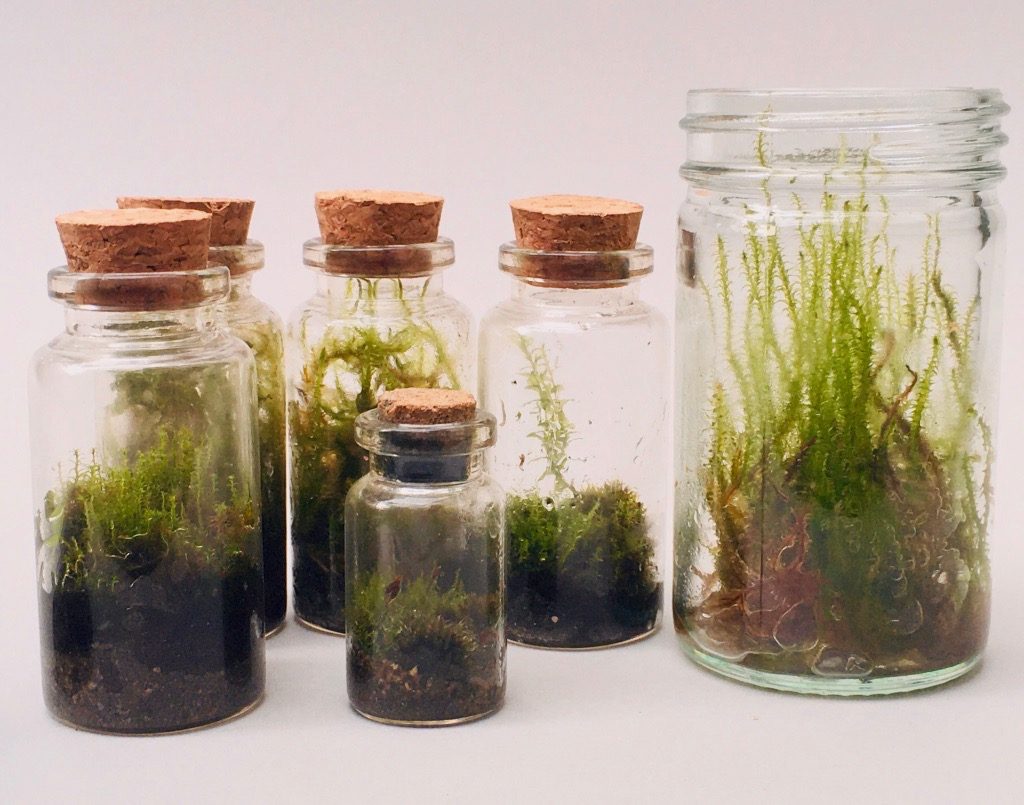
See more about terrariums here…
NOTES:
The moss Anoectangium compactum can survive up to 19 years in a dehydrated state, The Bryologist Vol. 25, No. 2 (March, 1922) https://www.jstor.org/stable/3237570?seq=1#metadata_info_tab_contents
“Four-hundred-year-old moss frozen in Little Ice Age revived in a ground-breaking experiment. The plant’s resilience suggests such cells may be ideal as trial balloons for researchers exploring survival beyond earth and travel to Mars” https://nationalpost.com/news/four-hundred-year-old-frozen-moss-re-animated-in-study-that-shakes-up-plant-science
RESOURCES:
https://species.nbnatlas.org/species/NBNSYS0000147421#overview
https://www.britishbryologicalsociety.org.uk/learning/some-common-bryophytes/common-mosses-on-walls/
http://www.bildatlas-moose.de/index.htm
https://bryophyte.cnps.org/index.php/resources/collecting
https://www.facebook.com/britishmoss
https://www.britishbryologicalsociety.org.uk/resources/bryophyte-identification/
How to collect samples:
https://bryophyte.cnps.org/index.php/resources/collectin